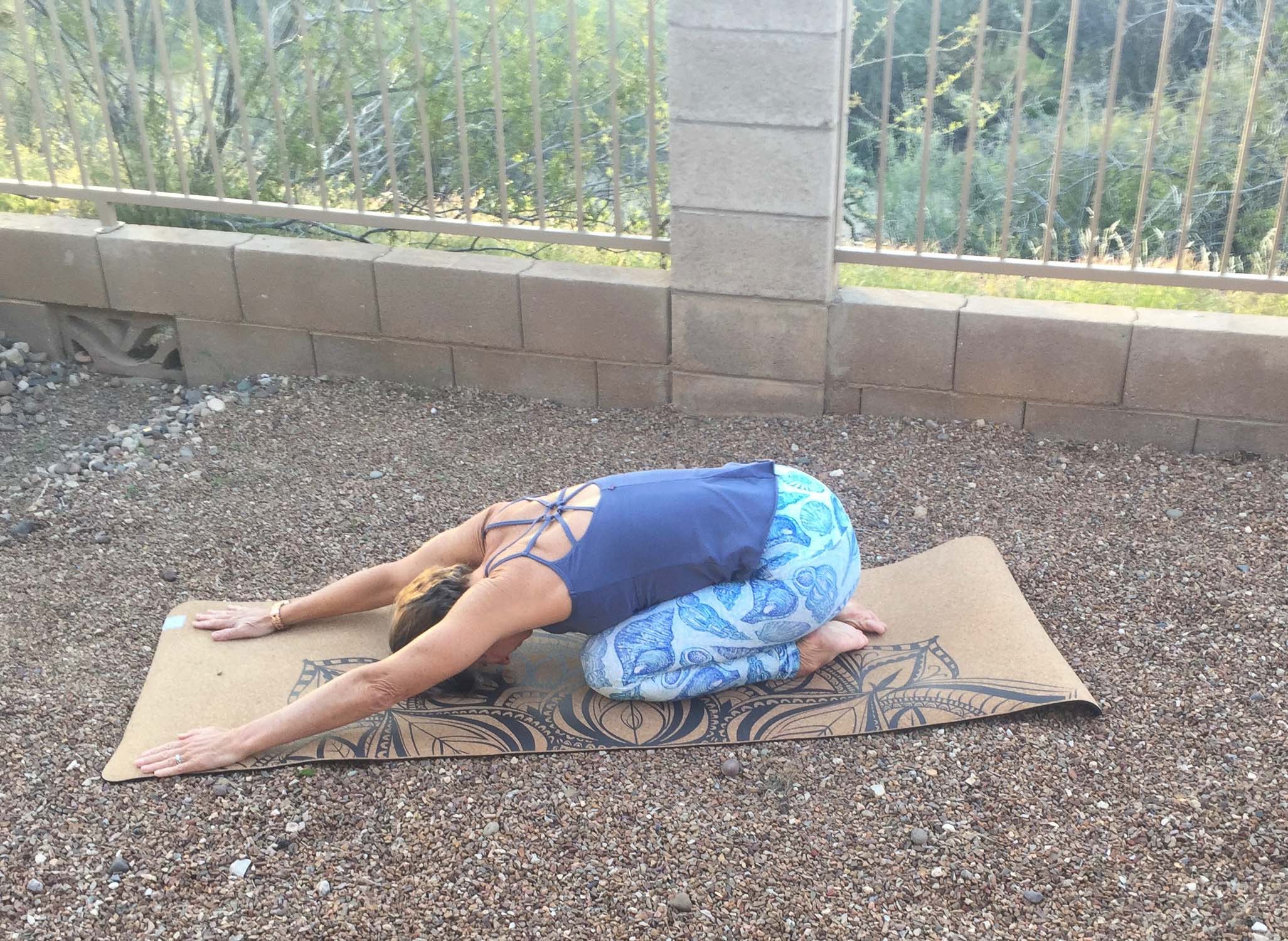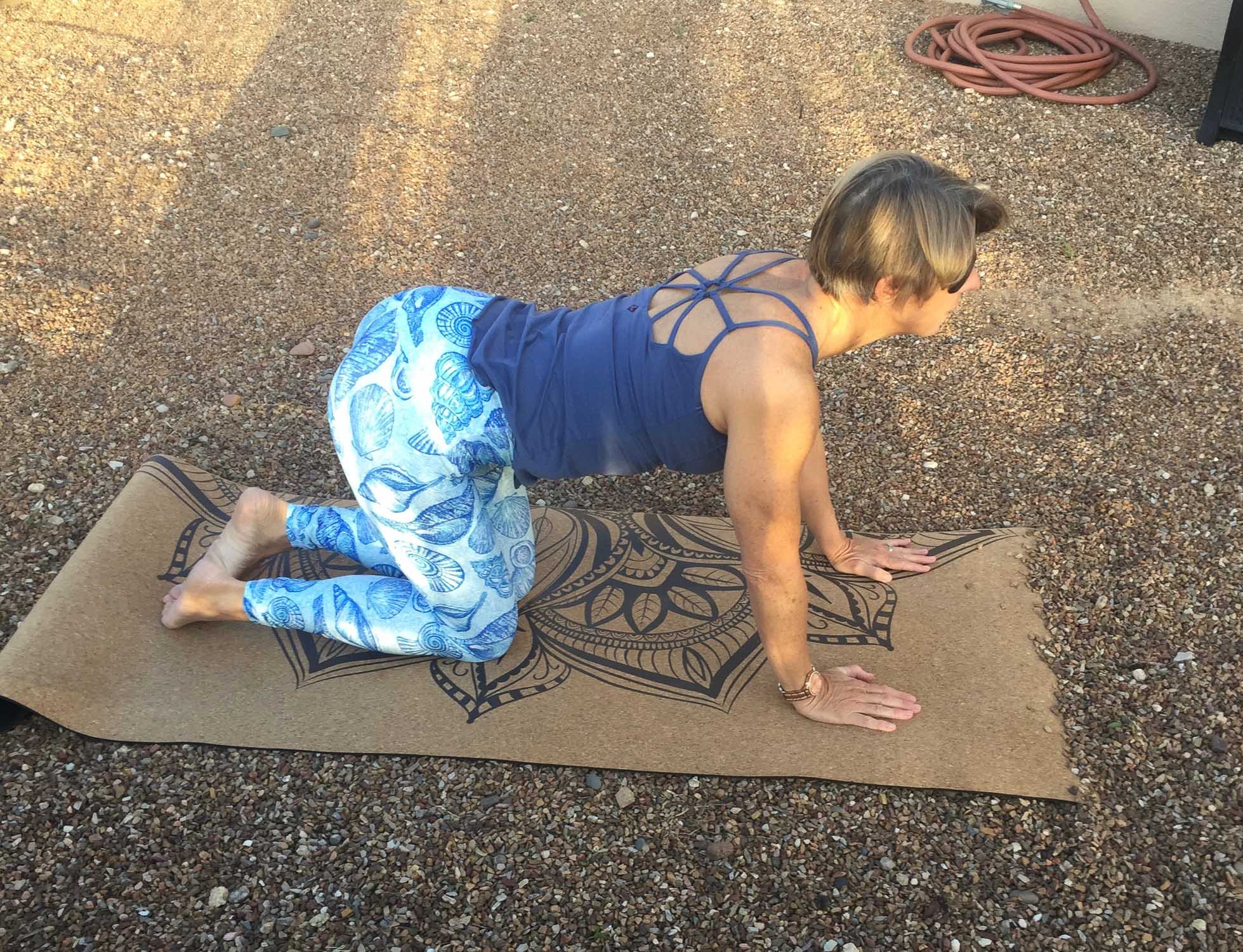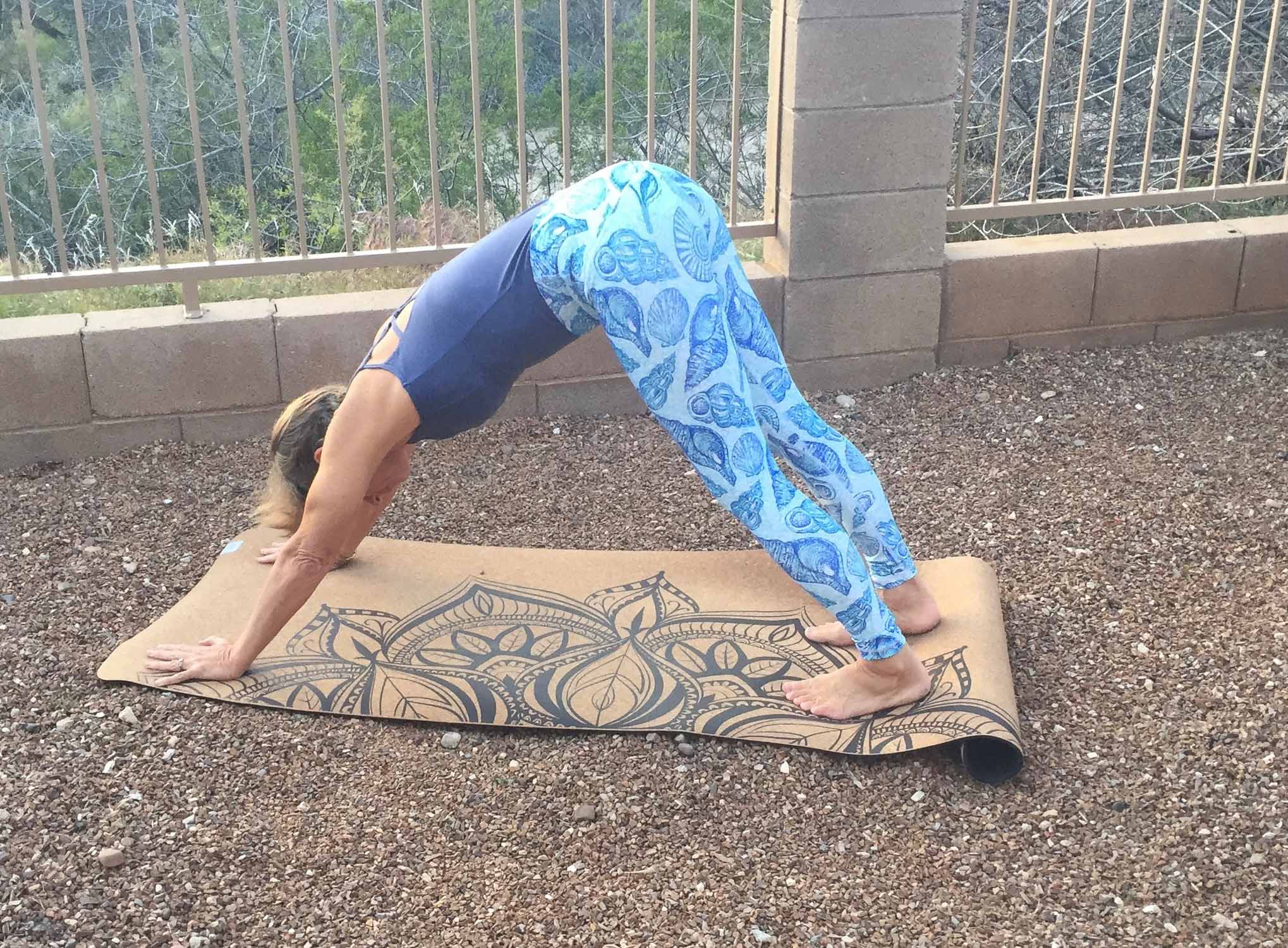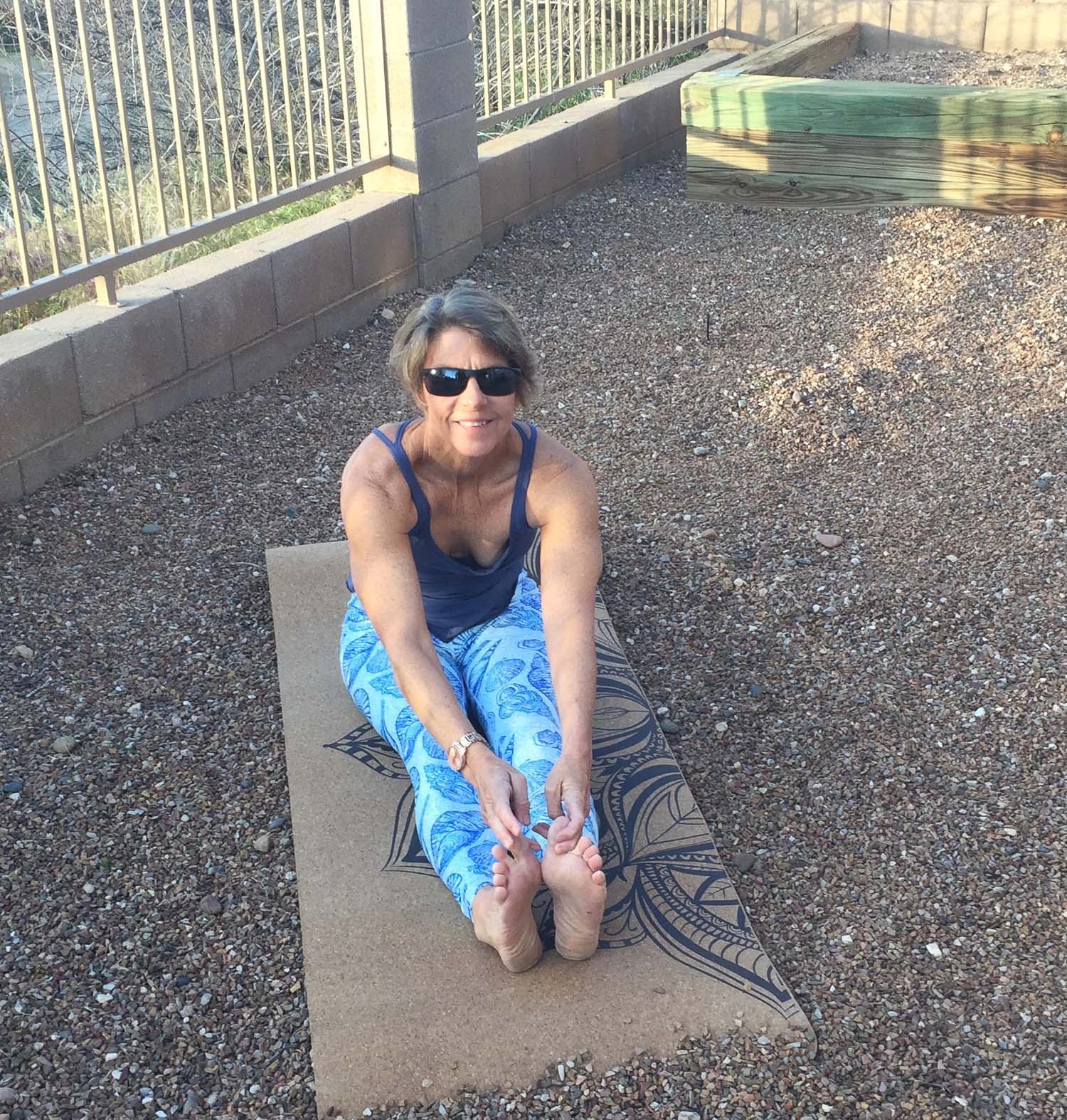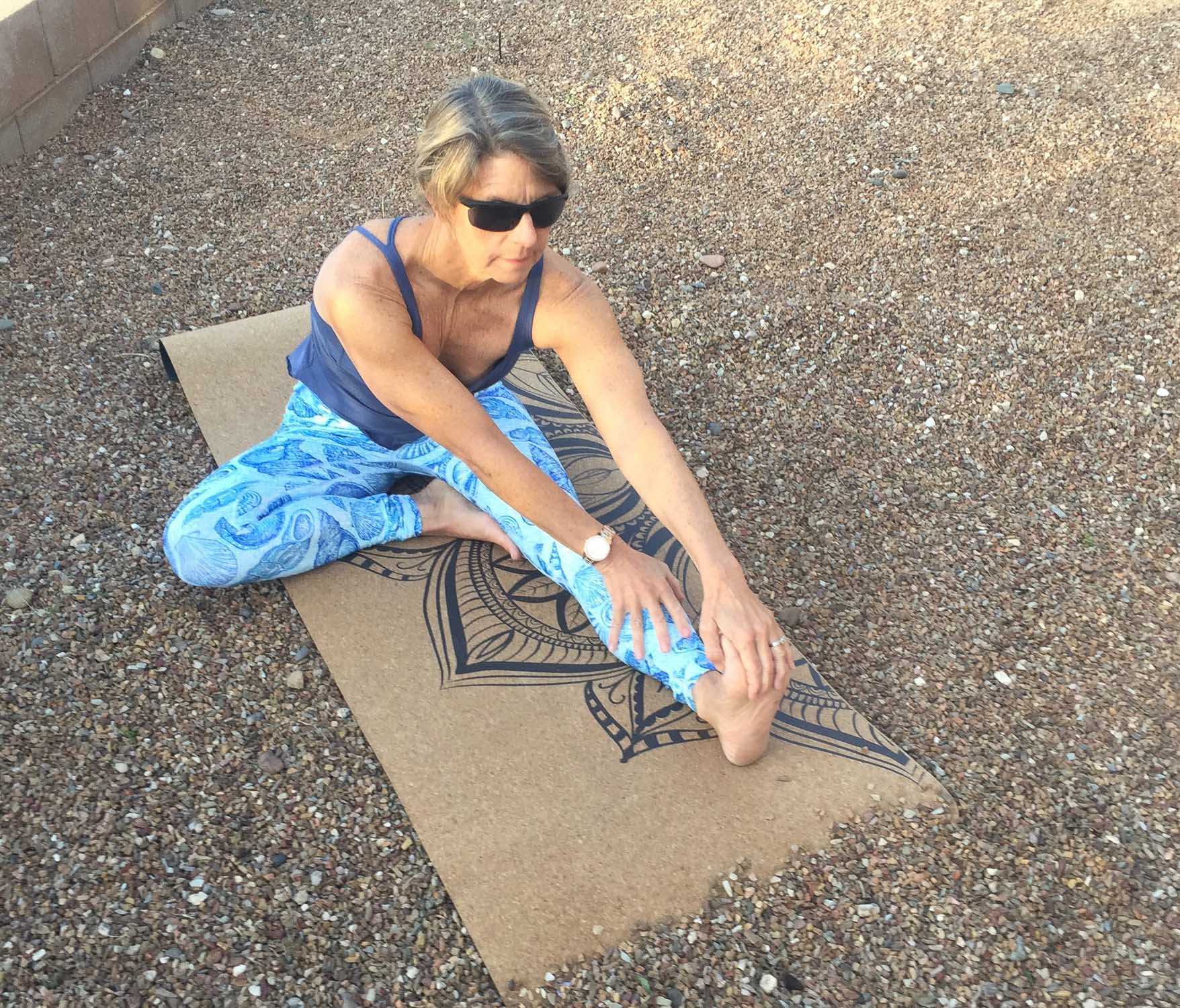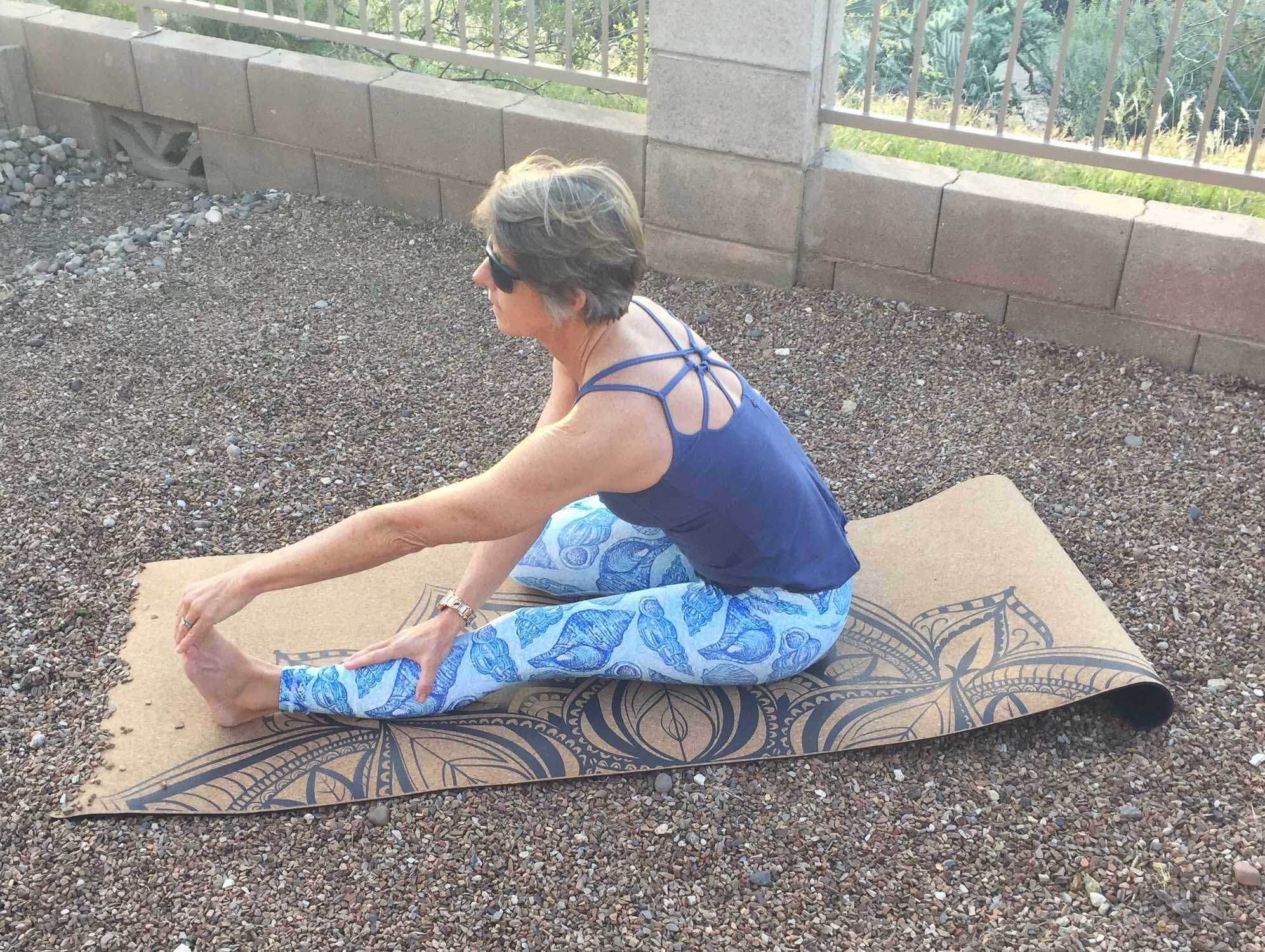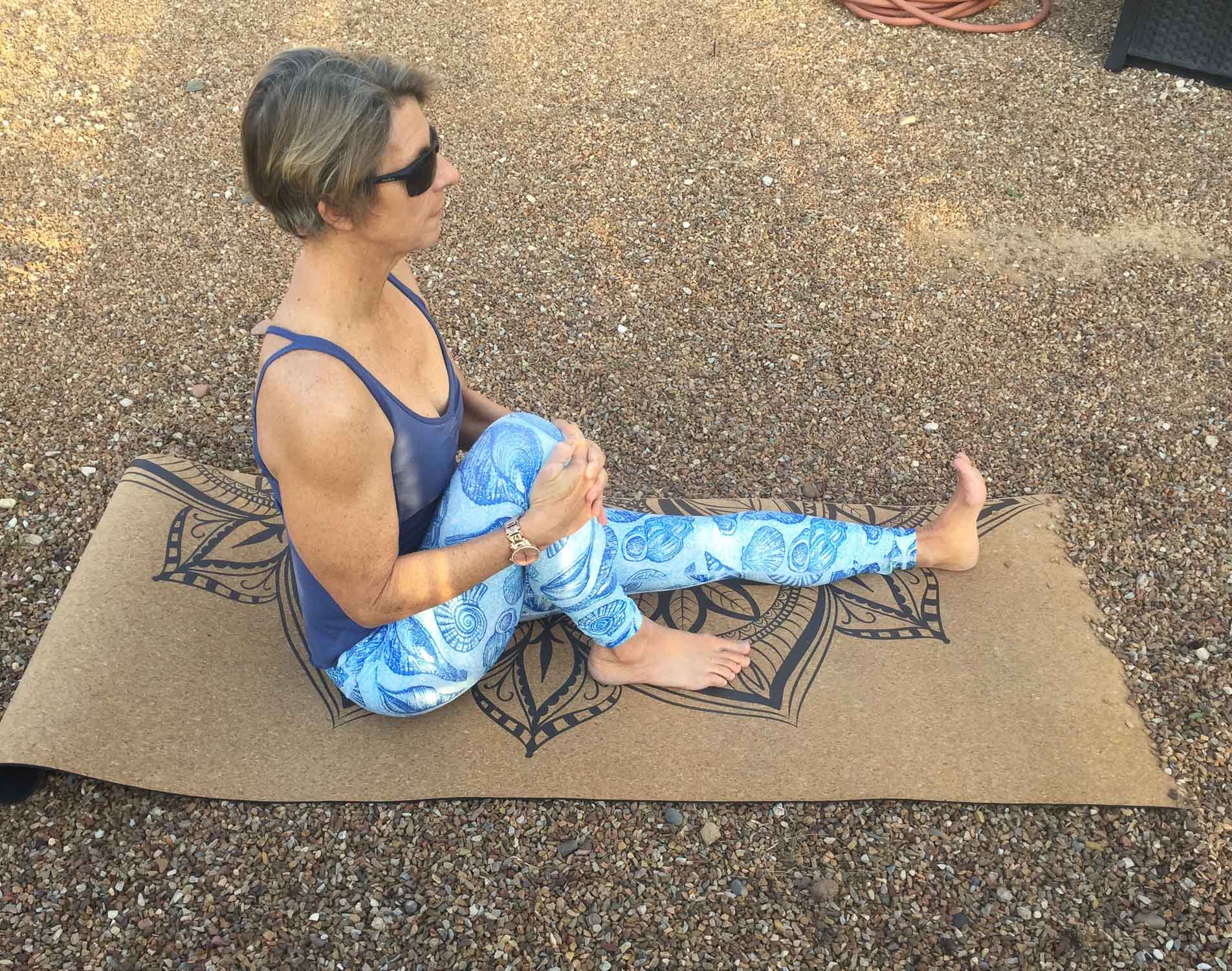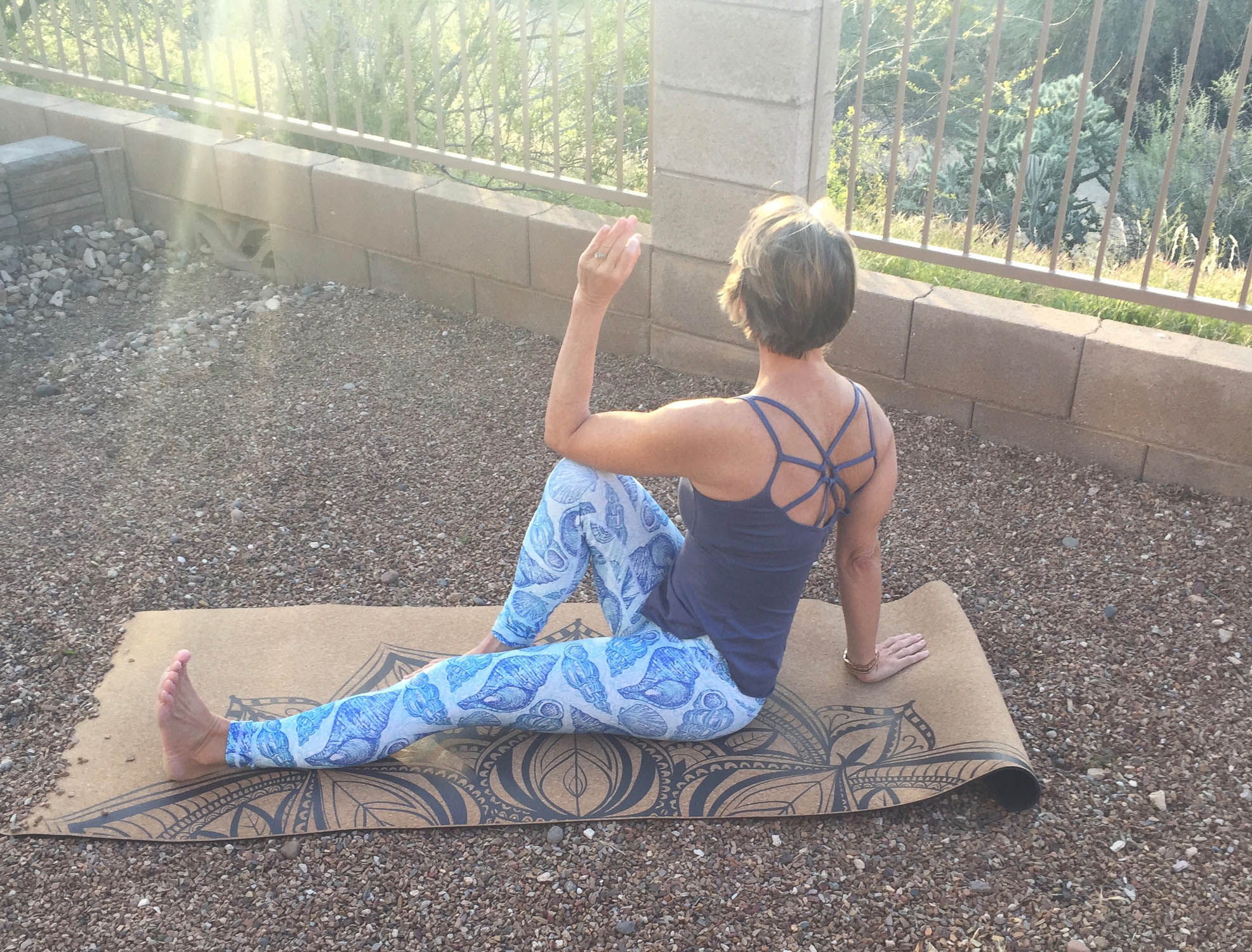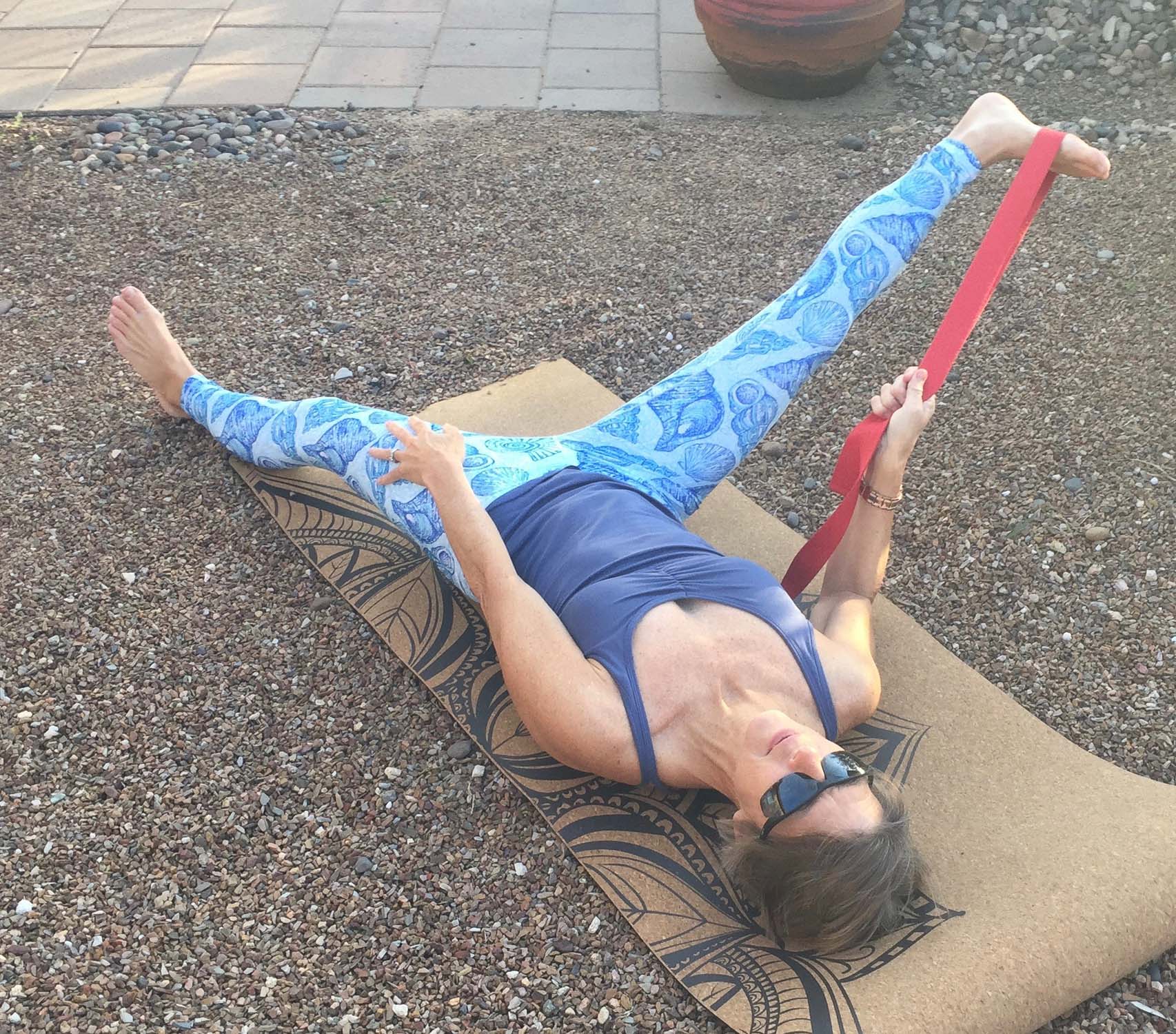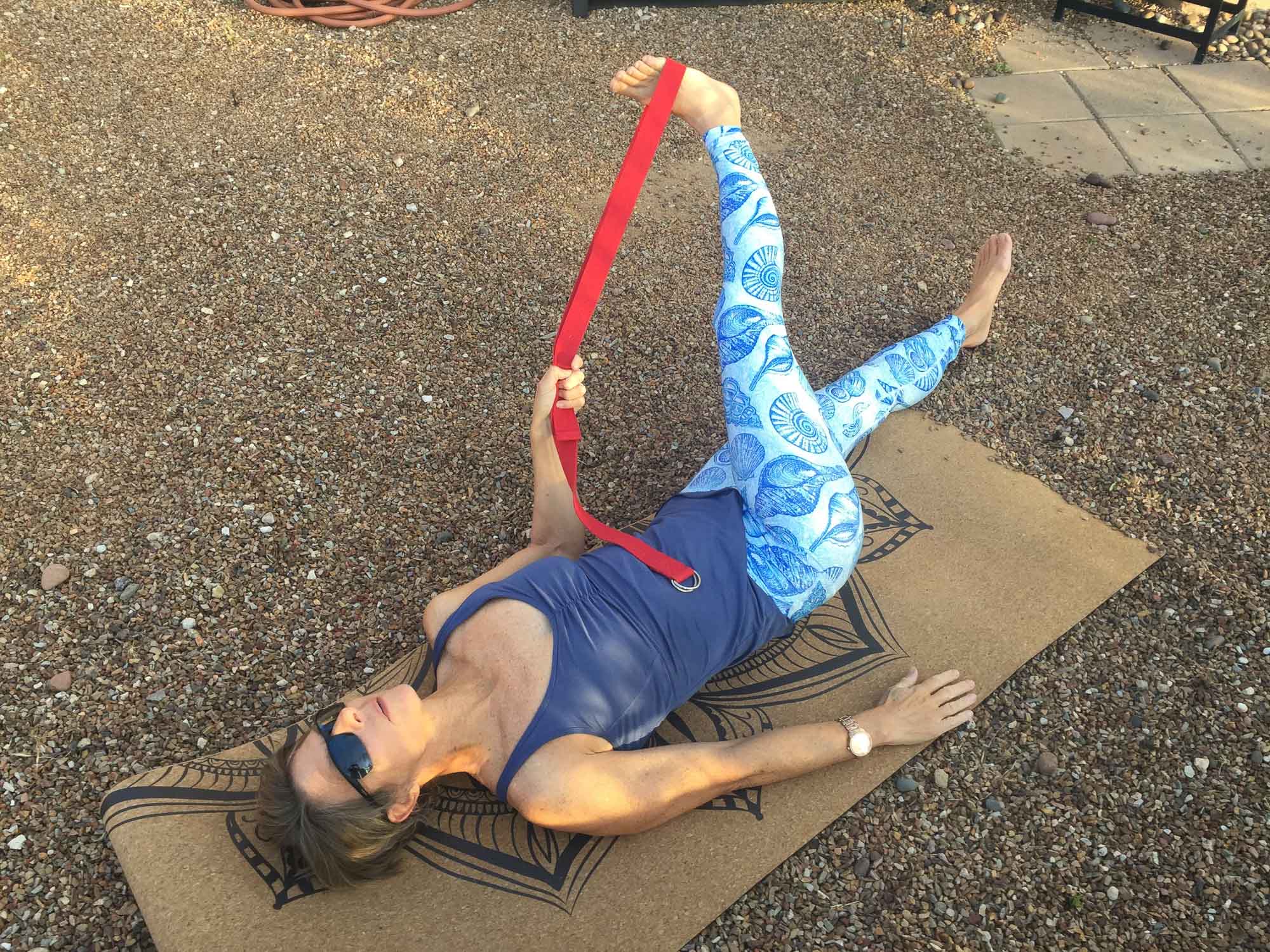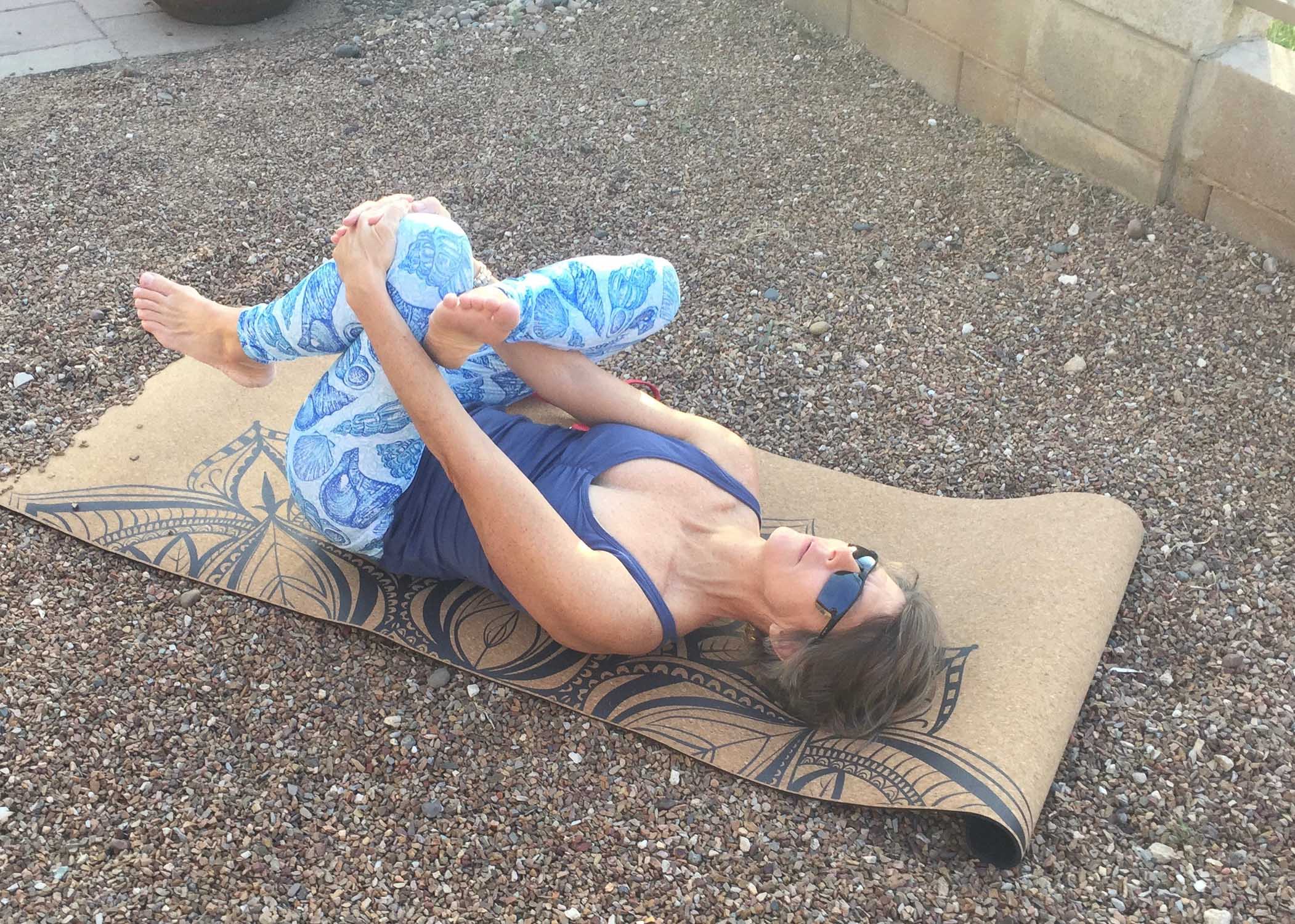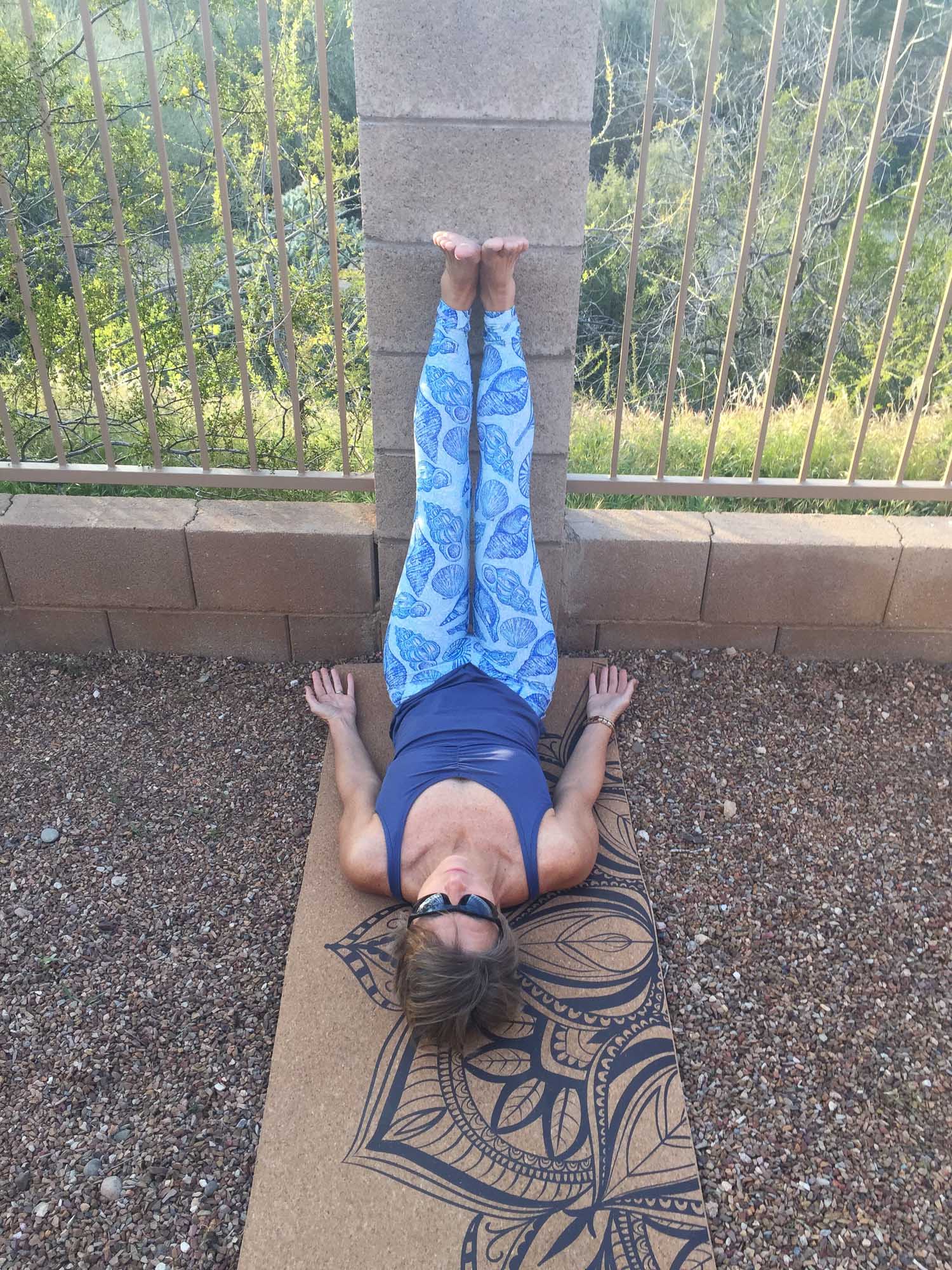Yoga Poses to Improve Flexibility
Use this sequence to improve flexibility and fascial tissue health
A long hiatus from the water—such as the one most of us are experiencing now—can lead to stiffness and reduced flexibility. Fortunately, yoga is easy to do at home and will help you maintain your flexibility until you can get back to your regular workout routine. You might even find that you will make these poses part of your workout regimen once you get back to swimming.
Below is a sequence of yoga postures that will stretch most of your major muscle groups and keep your fascial tissues healthy. (Fascia is the connective tissue under the skin that attaches to all your muscles.)
This sequence will work best if you’re properly warmed up. Perform this practice after a run, walk, or series of Sun Salutations. You can also take a warm shower or hot tub soak before the practice to soften the muscles and connective tissue further in preparation for these stretches.
Extended Child’s Pose
Slowly lower down onto your hands and knees and then melt down into child’s pose, extending your arms and bringing your hips back toward your heels. Be gentle with your knee joints—you can place a yoga blanket or towel between the backs of your lower legs and the back of your thighs to create the amount of separation you need so you can rest in this pose without experiencing any strain in your knee joints. Stay here for 10 breaths, allowing your mind to let go of outside distractions, simply following the breath. Listen to the sound of the breath and let it soothe you.
Child’s pose stretches your lower back, knee joints, and latissimus dorsi. If you have active shoulder pain and reaching arms overhead is uncomfortable, you can place the hands alongside your ears or sweep them back toward the ankles while resting in this position. You can also lie on your back and hug the knees into the chest instead if you find child’s pose uncomfortable.
Cat and Cow
From child’s pose, come up onto your hands and knees. Place your hands below your shoulders, knees below your hips. Exhale, rounding your spine and tucking your head and hips (like an angry cat). Inhale and roll your belly button downward, arch your back and raise your head and your hips. Perform this activity five to 10 times to open and close the spaces between the vertebrae and limber up the spine. Keep it fluid and flowing, matching your movements to a slow, relaxed breathing rhythm.
Downward-Facing Dog (Adho Mukha Svanasana)
From cat and cow, curl your toes under, raise your knees from the floor and your hips up toward the sky to come into your downward-facing dog. Feel lengthening through the entire back of your body. Make sure the fingertips are separated so your weight is equally distributed throughout your hands. Allow the crown of your head to lengthen toward the earth, gently press the heels back and your chest back toward your thighs, feeling a gentle stretch in your lower back, hamstrings, and upper back/shoulders. Stay in this pose for at least five breaths.
Seated Forward Fold (Paschimottanasana)
From downward-facing dog, slowly lower your knees back to the floor and then shift over onto your seat. Note: For the seated poses 4 through 7, if you’re tight in the hamstrings and lower back (many men are) please elevate your hips with a blanket so you can get your hips underneath you and you don’t feel any strain on the abdominals or lower back.
Extend your legs out it front, inhale, raising your arms to the sky and then exhale, hinging forward and reaching toward your lower legs or toes. Keep all of your spine lengthened from the sacrum to the crown of your head, gazing at your big toes. Try not to strain to reach your feet by lifting your shoulders. Keep them relaxed and away from your ears.
Head to Knee Posture (Janu Sirsasana)
After your forward fold, bend your right leg, drawing your foot in toward your center, knee turned outward. Settle onto your sit bones and flex your left toes back toward the left knee and engage the left thigh muscles, so the back of the knee lowers toward the mat.
Take a deep inhale, reaching arms up toward the sky and then exhale, hinging forward, reaching toward the lower leg or toes. Keep the shoulders relaxed, spine lengthened. You can also do this asana with a stretch strap under your left foot. Hold for five to 10 breaths before switching legs. This opens the hips and stretches the hamstring muscles.
Three Limbs Face One Foot Western Intense Stretch Posture (Trianga Mukhaikapada Paschimottanasana)
Next, bend the right leg, bringing the right foot toward your right hip (knee inside feet, like when you swim breaststroke). Be mindful of your knee joint. You may need to elevate your left hip and the back of your left thigh with a block or blanket to reduce torque on the knee if a tight knee angle is uncomfortable or not recommended for you.
Inhale and raise your arms toward the sky. Flex your left toes back toward the left knee and engage the left thigh muscles, so the back of the knee lowers toward the mat.
Exhale and hinge at the hip, reaching for your left lower leg or foot, gazing at your big toe. Keep shoulders relaxed, spine lengthened. Use a stretch strap to facilitate the stretch if desired. Hold for five breaths before switching sides.
Seated Twist (Marichyasana)
Now slide your right foot in toward your center, bending your leg until your right knee is stacked over your right ankle (about a hand’s width away from your left leg). Flex your left toes back toward the left knee and engage the left thigh muscles, so the back of the knee lowers toward the mat.
Inner Thigh/IT Band/Figure Four
Now descend slowly onto your back. Bend your knees and place your feet flat on the floor. Use a stretch strap or resistance band to do these stretches. Roll the right knee in toward your chest and then place the strap under your right foot. Extend your leg and then open it slowly out to the side, holding both ends of the strap with the right hand and deepening the stretch until you feel comfortable lengthening in your inner thighs. Place your left hand on your left thigh and relax the shoulder. Hold the stretch for five breaths.
Legs Up on the Wall
Place your mat perpendicular to a wall. Seat yourself with your side against the wall and then swivel your legs up on the wall and relax onto your back. Place your arms a bit away from your body, palms up, close your eyes and enjoy a 10-minute savasana in this relaxing position, which helps to decompress your lower vertebrae and reverses blood flow in your body. To stretch your pectoral muscles during this time of replenishment, you can place a foam roller on your mat perpendicular to the wall on your mat and lie down on that, opening the arms out to the side, palms up, legs up on the wall.
Categories:
- Technique and Training
SIGN UP FOR UPDATES FROM USMS

